Life Cycle of a Purchase Order: EDI X12, XML and PDF
Most of the business transactions B to C (Business to
Consumer) today are done by credit card over the web. On the B to B (Business
to Business) the volume and the velocity require a different approach, where
computer systems do most of the work. These systems are called supply chain
networks and their job is to connect buyers and sellers electronically to
exchange goods of any kind.
Supply chain networks have existed for many years but were
difficult and costly to integrate, which restricted their market to the elite. Their
inability to accept medium and small businesses forced a large portion of the
supply chain networks out of business.
The survivors learned the lesson and started to offer a scaled
down version of their services, increasing the size of their customer base. The
larger the network, the greater the chance of success, especially in growing
markets such as China and India.
Computer hardware evolves at a fast pace, as Moore’s law
states: every two years CPU makers double the number of transistors in a silicon
die, improving the lithography process. While IT organizations tend to upgrade
their servers every 3 years, data architects are slow to move from time tested successful
standards. These standards provide the back bone of systems’ interoperability.
One of greatest examples of successful standards for data interchange
format is Electronic Data Interchange (EDI), created by the National Institute
of Standards and Technology (NIST) in 1996. EDI’s goals were simple: a text
based format with a well-defined structure, which allows two entities to
exchange information.
The beginning of the formal definition reads: <<”the computer-to-computer
interchange of strictly formatted messages that represent documents other than
monetary instruments.”>>.
EDI was an instant hit. A variety of standard bodies
specialized in industry verticals creating their own dialects. Here are a few
examples:
·
Accredited Standards Committee X12
·
United Nations/Electronic Data Interchange For Administration,
Commerce and Transport (UN/EDIFACT)
·
Health Insurance Portability and Accountability Act of 1996 (HIPAA).
EDI is the legacy format that supply chain systems still use
today. Industry specific EDI dialects perform millions of transactions per
day. EDI standards boards have also come out with an XML version of the
dialects but the legacy format is still the de-facto standard.
Now in order to participate in these markets, you have to
understand how to interpret EDI transactions, and how to respond to a partner.
Walmart uses EDI to allow it to scale its business, requiring all suppliers to
interact with them using EDI to send documents such as Purchase Orders and
Invoices. http://www.walmartstores.com/Suppliers/248.aspx
Before we start, let’s refresh our memory on the definition
of a Purchase Order. Wikipedia states:
<<”A purchase order (PO) is a commercial document
issued by a buyer to a seller, indicating types, quantities, and agreed prices
for products or services the seller will provide to the buyer.”>>
In the following image we see a Purchase Order formatted
according to EDI X12 850 in its raw form.
Company “Office Supply” wants to purchase digital pens and
appropriate paper blocks from company “Smart Pen” and deliver the products to
company “OfficeY”.
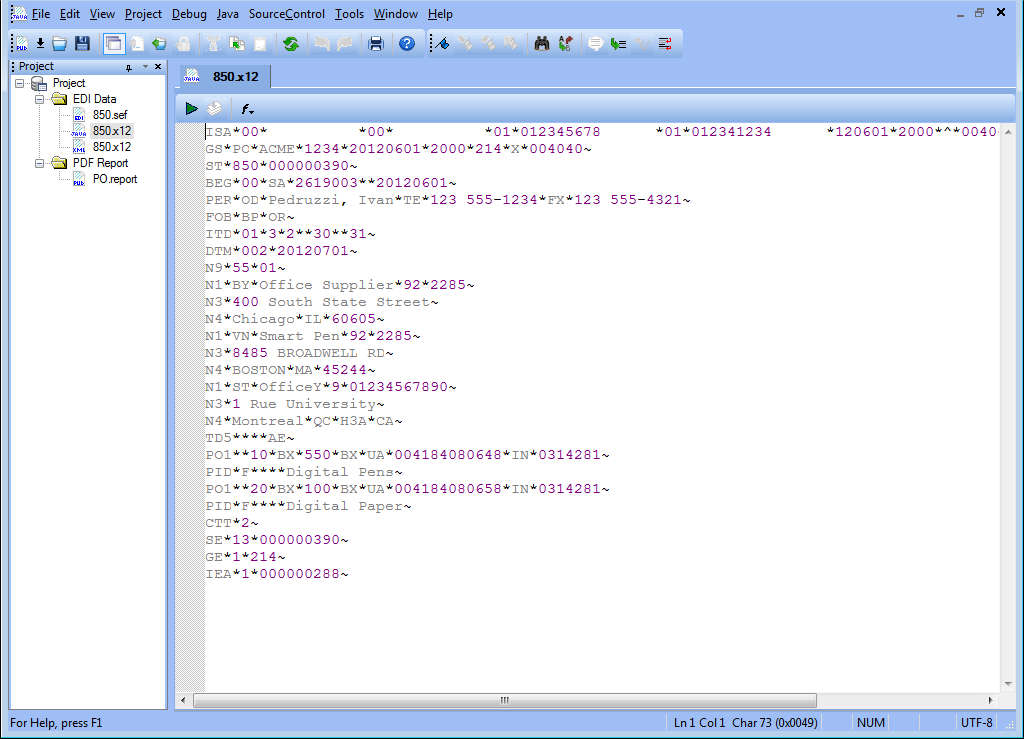
Unfortunately, this is not like XML. You may guess that
fields are separated by a special character but there is no markup around them,
therefore is very difficult to interpret the values. In the following image we
see the same EDI transaction in the Stylus Studio EDI to XML Module.
This is a very useful tool for analyzing EDI documents. We can click anywhere and
Stylus Studio shows us which field we are on, thanks to its vast EDI
repository. When we right click on a value that represents a code, we can see
the description.
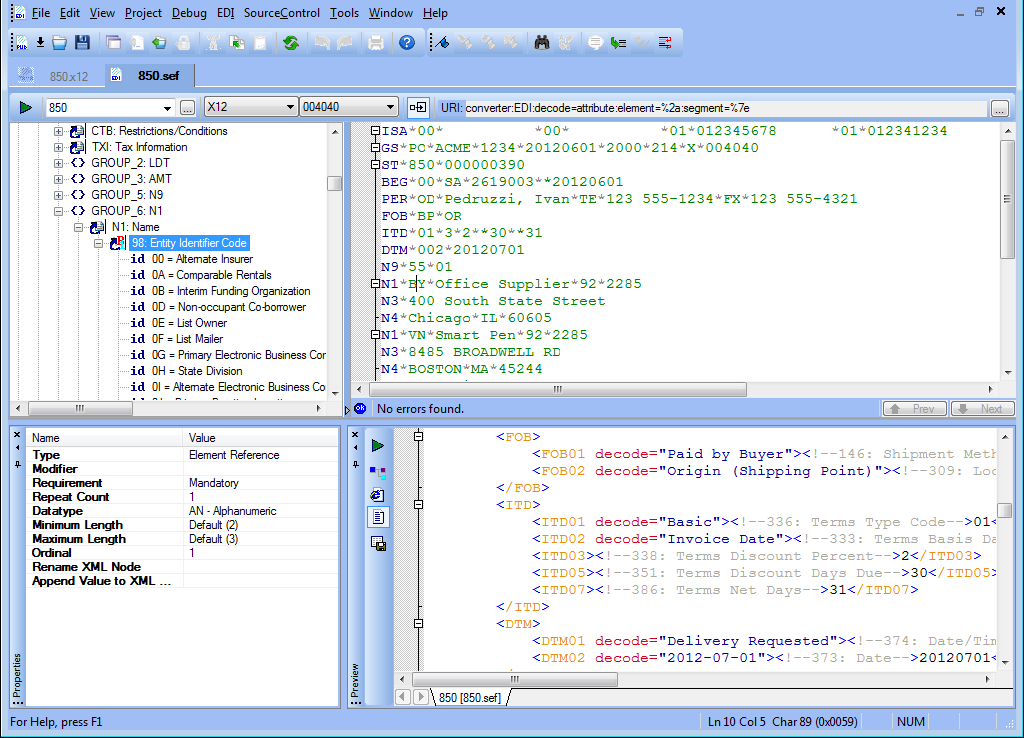
Now that the purchase order is in XML we can take advantage
of several technologies to manipulate and to store the data.
The EDI to XML module can be used to validate both the
structure, the code list values and in case of errors, provide suggestions to
work around the problem. For example, it’s quite common to encounter a
transaction in which some mandatory fields are missing or the field type does
not match the specification. In these situations Stylus Studio flags the error
and allows the user to overwrite the field definition to accommodate such customizations.
In Stylus Studio, almost any format can be represented as XML.
In the screenshot below the XML Editor is used to edit our purchase order.
The XML representation can be customized with a variety of
parameters. You may decide to generate a very verbose form with long element
names. You may also use informative comments that provide a detailed description
for each field. When looking at code values in the raw form, they are usually
very cryptic terms made of a few characters, which can now be associated with detailed
descriptions. The example below shows you that the code value BP stands for
“Paid by Buyer”.
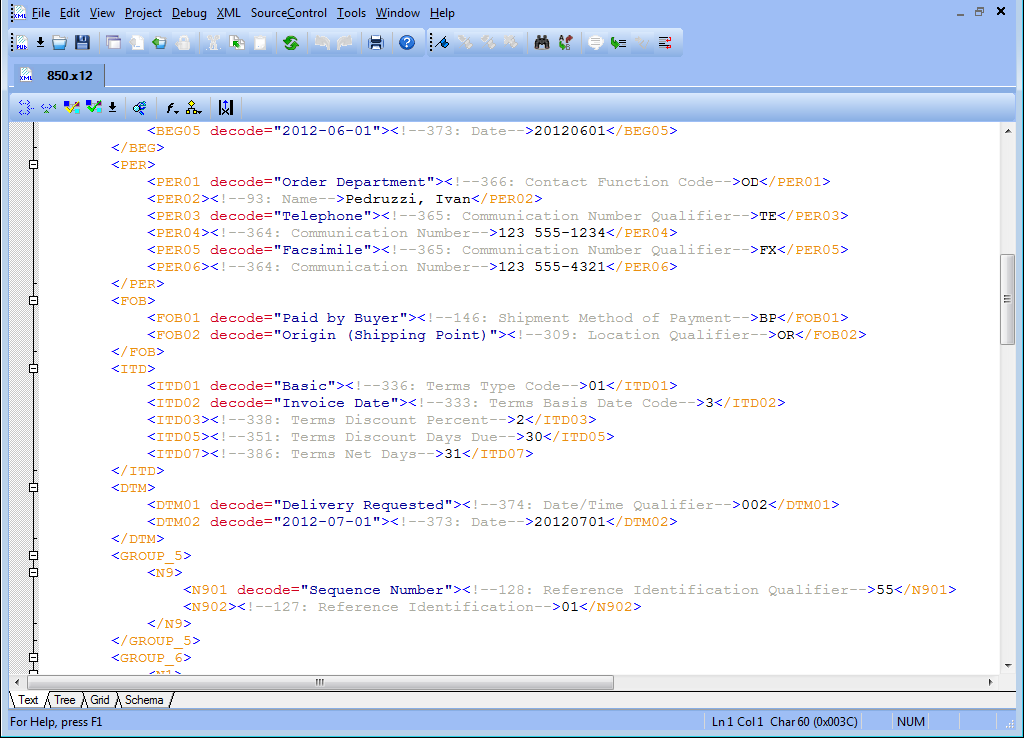
When an EDI transaction comes in, the first thing we want to
do is to archive it in a database. Often there are regulations that require
electronic copies to be maintained for several years and storing the transaction
in a relation database is the most common place where it can be archived. The
following screenshot shows how the Stylus Studio XQuery mapping tool can help
you to onboard the transaction into a database. In our example we are using
Microsoft SQL Server 2008.
We would like to point out a benefit of using the DataDirect
XQuery engine, bundled with Stylus Studio. This combination allows you to store
primitive types such as the order id and the order date as well as the entire input
document into an XML type column.
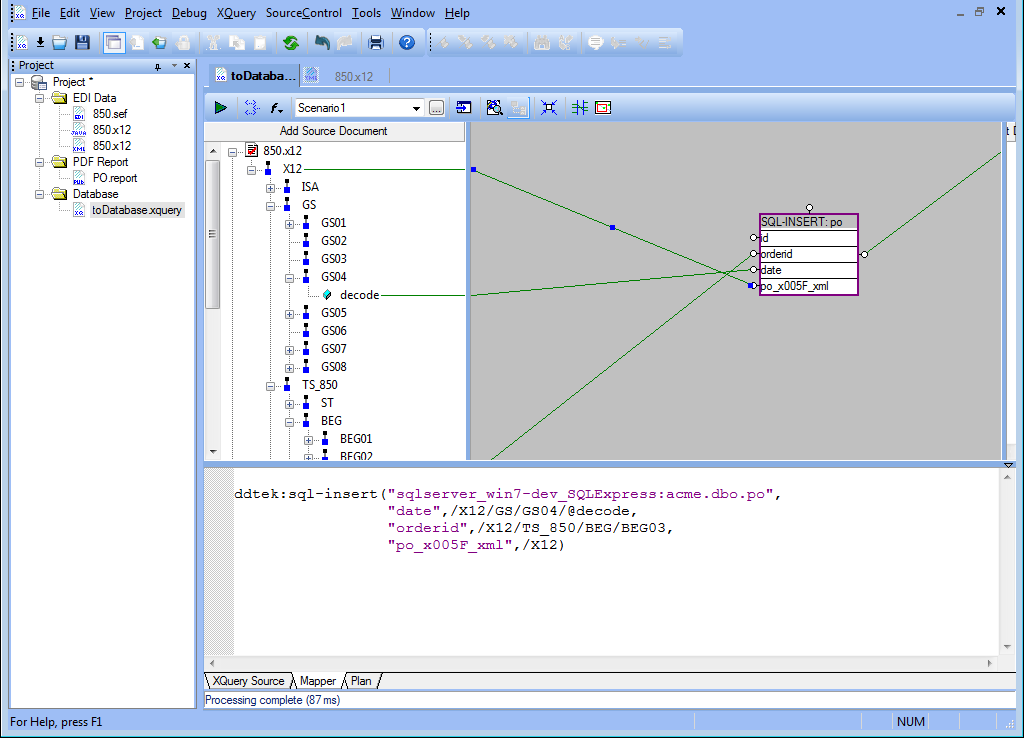
After the XQuery execution we can see a new record has been
created in the table.
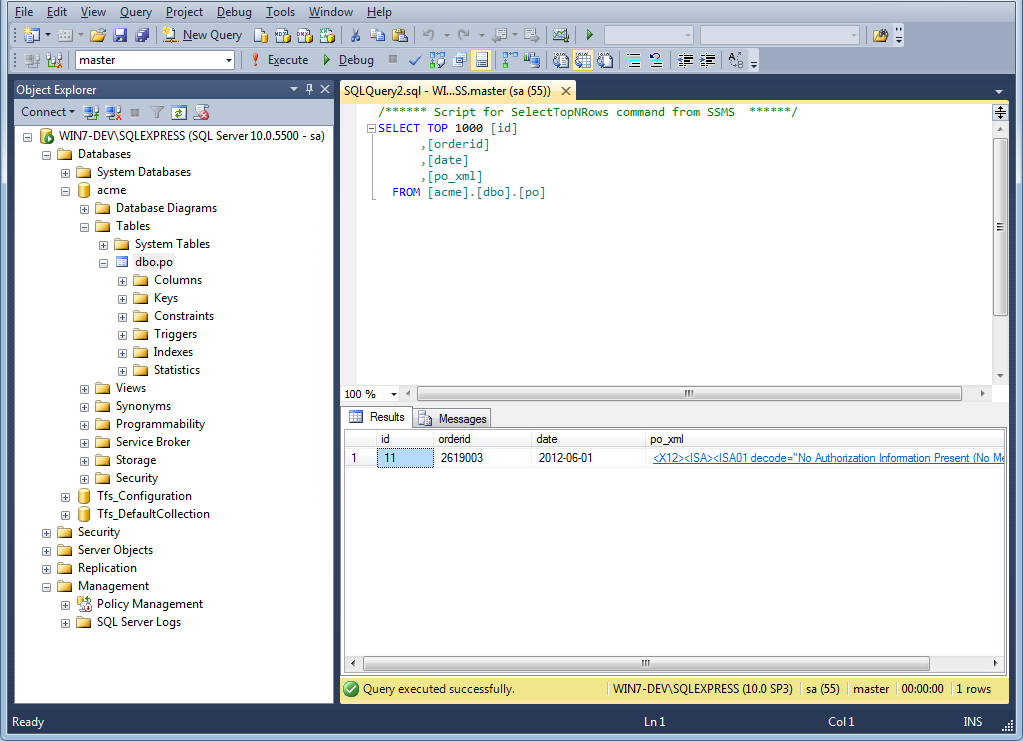
EDI and XML share similar benefits. They are great for
making computer systems communicate, but human beings need some help to make this
information easy to interpret. The following screenshot shows how Stylus Studio
XML Publisher can be used to produce an appealing PDF document that can be used
to display on the screen and on printed paper.
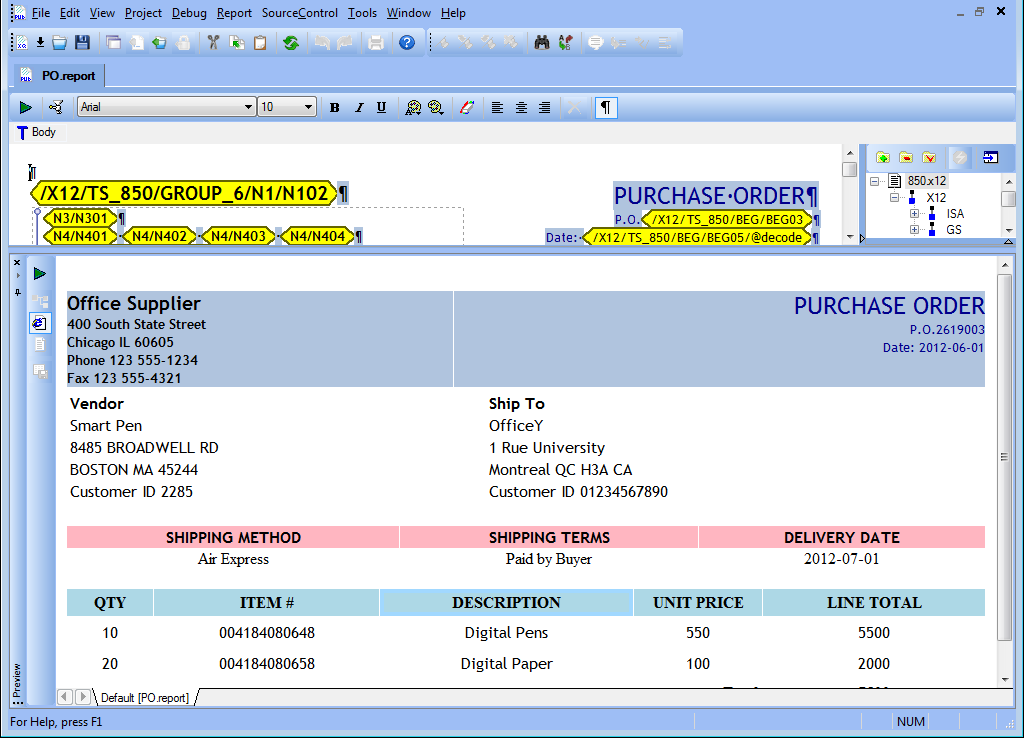
We hope you enjoyed reading this article. If you have any
questions, do not hesitate to contact us.
You can download the Project Zip file by clicking here.
- Stylus Studio Team
 Technical Support
Technical Support
 Follow us on Twitter
Follow us on Twitter
 Connect on Facebook
Connect on Facebook